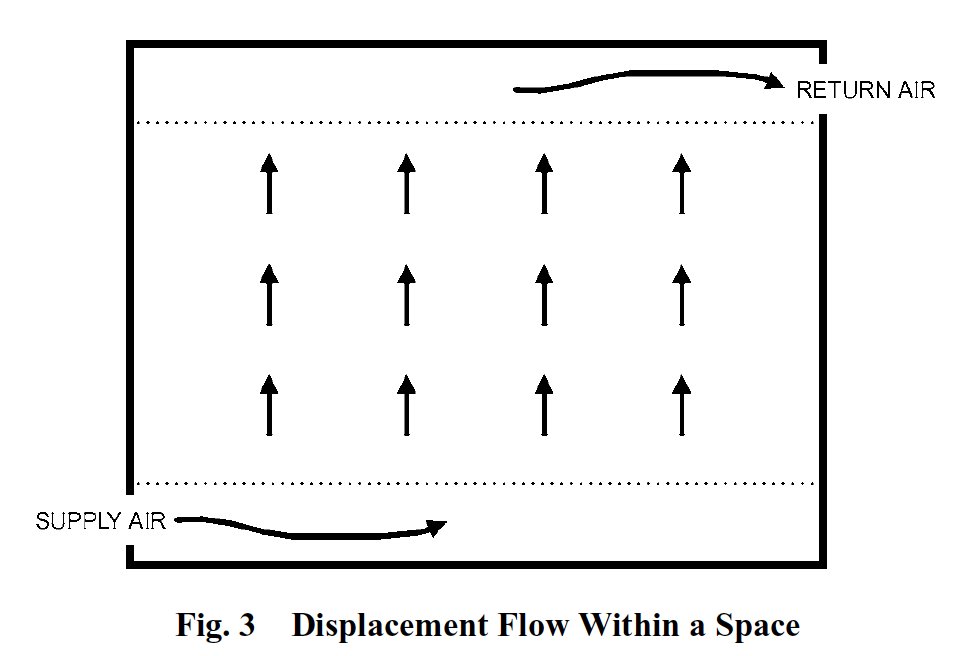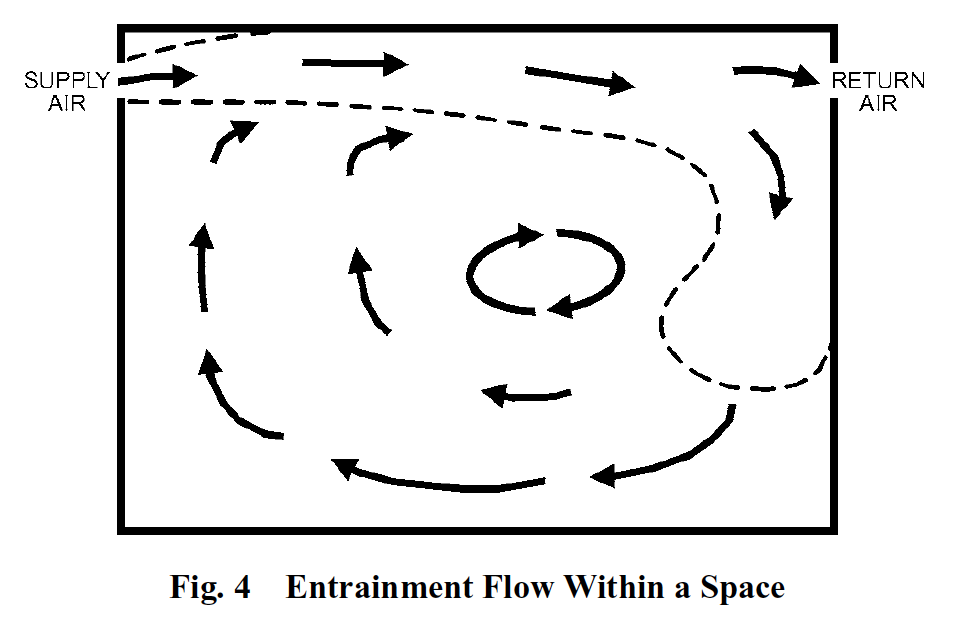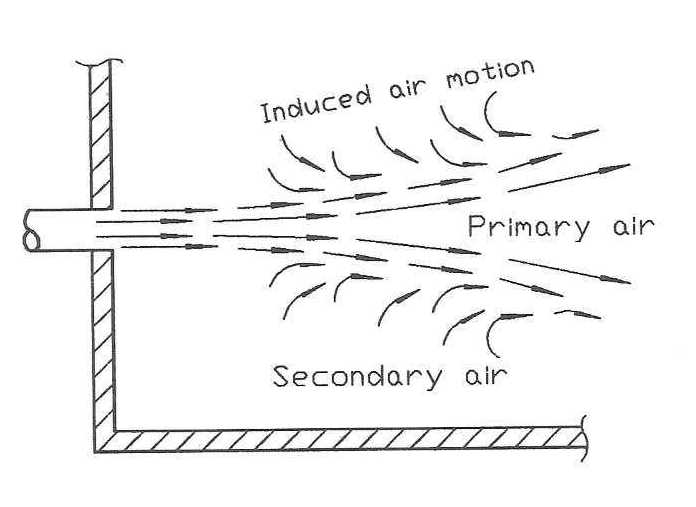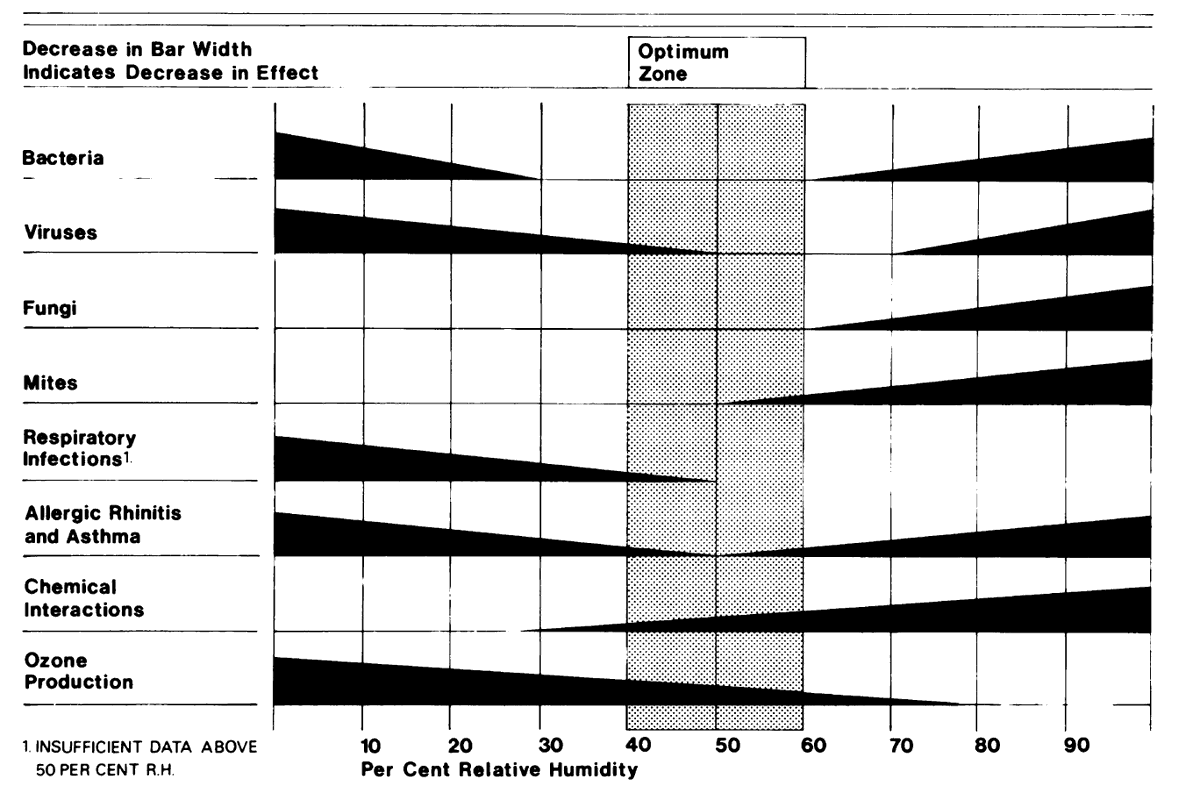Interesting, short thread from #IAQ researcher @Poppendieck. His point is that putting "new" air into a room doesn& #39;t mean you& #39;ve removed an equal amount of "old" air. 1/15 https://twitter.com/Poppendieck/status/1318155156622626817">https://twitter.com/Poppendie...
Pushing new air into a room will result in an equal amount of air leaving the room, but that air leaving the room may include some of the new air that just entered. The amount depends on the extent to which the new air mixes with the old air. 2/15
Displacement flow results in little mixing, so you remove more pollutants (e.g., SARS-COV-2). You can achieve this through low air flow rate, low velocity, & supply/return separation. (Fig. from ASHRAE Handbook of Fundamentals) 3/15
Entrainment flow results in significant mixing, with more new air removed. Higher air flow rate & velocity cause more mixing. (Fig. from ASHRAE Handbook of Fundamentals) 4/15
If you& #39;re familiar with Manual T from @accausa, you know about entrainment flow. The new air is the primary air; the old air entrained to move is secondary air. (Fig. from ACCA Manual T) 5/15
But there& #39;s more to the story than how much old air you remove. What is this new air? Is it good, clean air? Or is it introducing its own pollutants? 6/15
The new air could be straight outdoor air from the ventilation system. It could be air recirculated through the heating & cooling system, possibly with outdoor air mixed in. It could be air leaking in from outside the room. 7/15
Of course, infiltration is generally a bad thing, but if your goal is simply to replace air possibly contaminated with SARS-COV-2, that nasty air from the crawl space or attic may do the trick. 8/15
Ideally, it& #39;s a mix of recirculated air and outdoor air brought in intentionally, with the recirculated air having been cleaned by a MERV-13 or higher filter. 9/15 https://www.energyvanguard.com/blog/can-your-hvac-system-filter-out-coronavirus">https://www.energyvanguard.com/blog/can-...
The outdoor air from the ventilation system is what most people think of when we start talking about air changes. Ideally, it& #39;s just enough to keep the carbon dioxide level below 1,000 ppm. 10/15
Airtightness, source control, filtration, & local ventilation are just as important as ventilating with outdoor air. And portable air cleaners, like the #CamparettoCube, can help, too. 11/15
https://www.energyvanguard.com/blog/how-make-high-merv-diy-portable-air-cleaner">https://www.energyvanguard.com/blog/how-...
https://www.energyvanguard.com/blog/how-make-high-merv-diy-portable-air-cleaner">https://www.energyvanguard.com/blog/how-...
Let& #39;s not forget the importance of humidity control, either. Keep the relative humidity between 40% (if you can) and 60% for optimal healthfulness. 12/15
https://www.energyvanguard.com/blog/humidity-health-and-sterling-chart">https://www.energyvanguard.com/blog/humi...
https://www.energyvanguard.com/blog/humidity-health-and-sterling-chart">https://www.energyvanguard.com/blog/humi...
So, @Poppendieck just scratched the surface of this topic. And there& #39;s even more. We don& #39;t care about only one room; we want all the rooms in a house to have good, clean air. 13/15
If you want to go deeper into this topic, the ASHRAE Handbook of Fundamentals ch. 16 covers ventilation & infiltration. You can learn about air change rates, time constants, and the difference between ventilation effectiveness & air change effectiveness there. 14/15
And, who knows, maybe I& #39;ll write an article about. 15/15
 Read on Twitter
Read on Twitter






